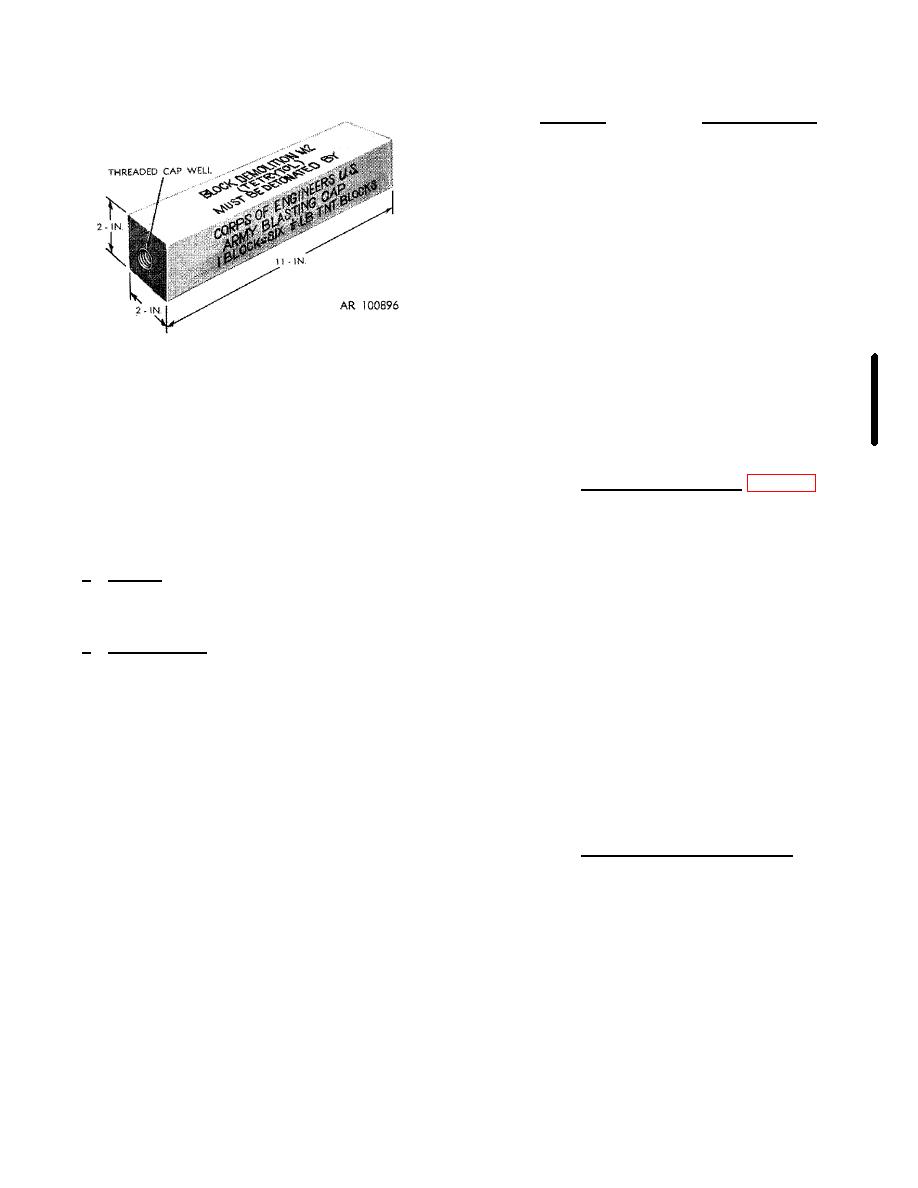 |
|||
|
|
|||
|
Page Title:
Figure 4-6. M2 block demolition charge, tetrytol. |
|
||
| ||||||||||
|
|
 TM 9-1300-277
Detonator
Country of Origin
Cap, blasting, electric,
US
M6
Cap, blasting, non-
US
electric, M7
Electric detonator
Italy
Nonelectric detonator
Italy
ET4
Detonator No. 1
Netherlands
Ordinary PRB detonator
Belgium
BRISKA detonator
France
DM11 detonator
Germany
Commercial blasting caps J1 (non-electric caps) may be
Figure 4-6. M2 block demolition charge, tetrytol.
used in place of military caps M7, and commercial
blasting caps J2 (electric caps) may be used in place of
be run to determine that propagation of the explosion is
military caps M6, The main charge for the J1 and J2
complete for the quantities of munitions to be destroyed.
blasting caps is approximately double that of the
In addition, all safety requirements in the
commercial No. 8 blasting caps.
Demilitarization Disposal DMWR's must be followed.
Authority to run the tests and use alternate demolition
(1) Caps, blasting, electric (fig. 4-7). These
charges must first be obtained from Commander, US
are used when a source of electricity, such as a blasting
Army ARRCOM, ATTN: DRSARMAD, Rock Island, IL
machine, is available. Electric caps have lead wires of
61299.
various lengths, the most common being 12 feet long.
To prevent accidental firing, they have a short-circuiting
4-3. DEMOLITION CHARGE INITIATORS
shunt which must be removed before using the cap. If
a. General. Charge initiators include a wide range
the cap is without a shunt, the bare ends of the lead
of devices and materials which contain explosives in
wires will be twisted together to provide the shorting
some form and which are used to initiate the detonation
action to prevent accidental initiation by static electricity.
of demolition charges.
Electric blasting caps require about half an ampere of
b. Blasting Caps. Blasting caps are the main
electricity passing through their wires for ignition.
elements used to initiate high explosives. They function
Misfires can result from mixing electric caps of different
by translating a small signal, either a flame or a pulse of
characteristics in a series circuit-one type cap fires
electricity, into a detonation wave. They are designed
before the others have been given enough electrical
for insertion into cap wells and are also the detonating
energy to fire. With the exception of the military M6
element in certain firing devices. Blasting caps are
cap, electrical characteristics of caps can vary greatly,
classified by type of ignition and strength. Military
even from lot to lot made by one manufacturer. For this
electric blasting caps are instantaneous ignition.
reason, different types of commercial caps and even
Commercial electric blasting caps can be delay or
different lots of the same type made by the same
instantaneous ignition; No. 8 strength delay caps are
manufacturer should never be put together in a blasting
generally used since they are compatible with military
circuit.
dynamite. The blasting caps listed below, both electric
(2) Cap, blasting, electric, M6. Electric
and nonelectric, are recognized as interchangeable
blasting cap M6, an instantaneous ignition No. 12
within NATO (the recognized NATO terms for blasting
strength cap, is the standard Army electric blasting cap.
cap is 'detonator').
It initiates any standard demolition charge. Blasting caps
M6 are electrically uniform and, for this reason, any lot
of M6 caps may be mixed with any other lot of M6 caps
in a blasting circuit without fear of misfires resulting from
different
Change 1
4-8
|
|
Privacy Statement - Press Release - Copyright Information. - Contact Us |